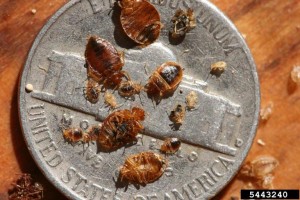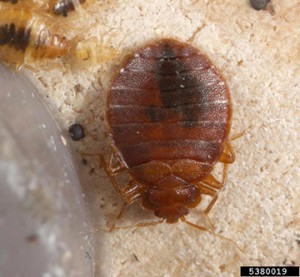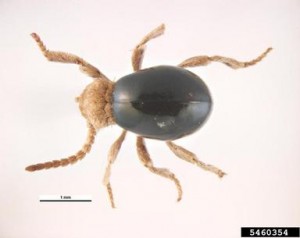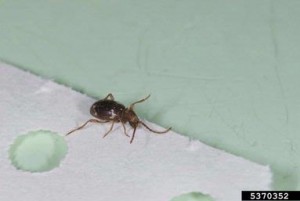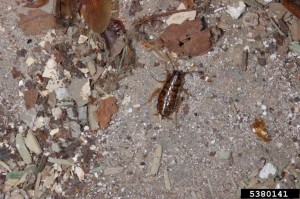The person responsible for pest management decisions in your school or child care facility should be able to identify bed bugs, as well as understand their life cycle, habitat needs and how to prevent or remove them. But all of us should do ourselves a favor and learn about this pest. With ever-increasing incidences of bed bug infestations, knowledge is your number one key to prevention.
Bed bugs are small insects that feed on blood. They prefer to be active at night and to hide out in dark, narrow crevices or creases during the day, but daylight (or keeping the lights on) won’t prevent bites if they’re hungry.
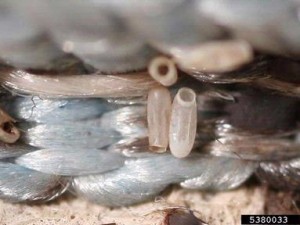
Hatched bed bug eggs on fabric of a box spring. Photo by Gary Alpert, Harvard University, Bugwood.org
Bed bugs have an incomplete metamorphosis (three stages – egg, nymph, adult) meaning they don’t pupate. Once an egg hatches, that tiny bed bug is going to need to eat. Before that first meal, it is semi-transparent, pale and the size of a poppy seed.
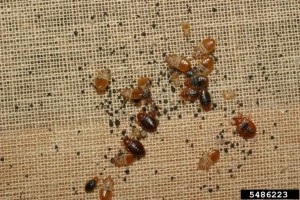
Bed bug adults, nymphs, frass on fabric. Photo by Barbara Bloetscher, The Ohio State University, Bugwood.org
Nymphs look like miniature adults and as they grow, they molt (shed their “skin”- their exoskeleton) until they are full-sized adults. For this reason, cast skins are a sign of infestation.
Both males and females eat blood meals. In all cases, their excrement gives them away–look for dark droppings or stains. Unfed bed bugs are flat; rounded ones have had their meal.
Bed bug identification is key. Don’t confuse them with other small insects found in the home:
Carpet beetle
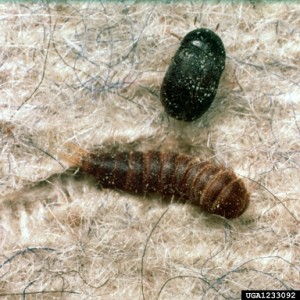
Adult and larva- black carpet beetle. Photo by Clemson University – USDA Cooperative Extension Slide Series, Bugwood.org –
Spider beetle
cockroach nymph
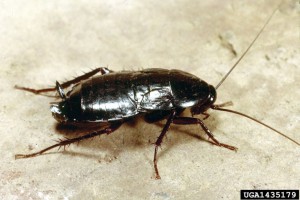
Oriental cockroach nymph. Photo by Clemson University – USDA Cooperative Extension Slide Series, Bugwood.org
We hope this has improved your bed bug ID skills. For more on bed bugs in schools, as well as homes, visit the New York State Integrated Pest Management program website!

